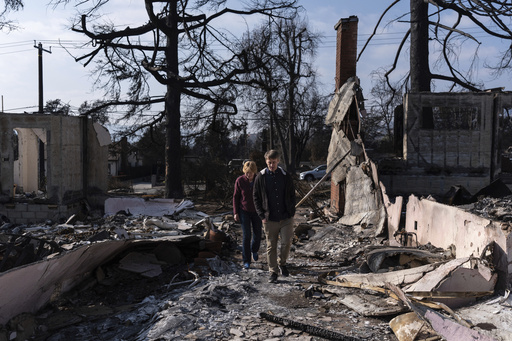
SEATTLE — When faced with the necessity of repairing a home, the challenges multiply significantly if the damage stems from a major natural disaster that affects several properties in your area. Knowing how to navigate the complexities of home insurance in the aftermath of such events is crucial, so it’s beneficial to be prepared before a crisis strikes.
Understanding your insurance coverage is vital. Policies can vary greatly in what they cover, especially during prevalent emergencies. One of the first steps to take is to review whether your policy includes “replacement cost value” coverage. This standard ensures you receive sufficient funds to replace lost items in the event of a major catastrophe, such as a fire or flood.
On the other hand, if your policy only offers “actual cash value” coverage, it means your compensation will only reflect the depreciated value of your belongings at the time of loss. Amy Bach of the advocacy organization United Policyholders emphasizes the contrast between these two types of coverage by stating, “Actual cash value is akin to the price you’d find on Craigslist; it doesn’t account for the cost to replace the items.”
Following a disaster, financial demands escalate rapidly, whether you’re seeking temporary housing or purchasing necessary items like clothing and toiletries. Familiarizing yourself with your state’s regulations on advanced insurance payments is beneficial in those early days. For instance, in California, which has strong consumer protection laws, insurance companies are mandated to issue advanced payments of up to $250,000 or 30% of the dwelling coverage limit once a state of emergency is declared and a total loss has occurred. These payments can provide immediate assistance without requiring a detailed inventory of lost items or waiting for staff to assess the damage on-site.
If you struggle to contact your insurer, community emergency response centers can serve as an invaluable resource. Such centers often provide access to both state and federal professionals who can assist you in navigating your situation. They may also offer insights into additional aid, grants, or subsidies, which can complement your insurance benefits. Furthermore, local businesses might host initiatives to provide essentials like furniture and clothing to those affected.
When contemplating your recovery, it’s essential to factor in the timeline for rebuilding. You might find yourself displaced for an extended period – months or even years, depending on the severity of the disaster. In situations like significant wildfires, the cleanup phase can consume almost as much time as the construction of new structures.
During this displacement, it’s important to remain mindful of mortgage payments on a home you cannot occupy. Typically, property insurance includes coverage for living expenses while you are displaced, often referred to as “loss of use” or “additional living expenses.” It’s prudent to review this aspect of your policy to ensure you have adequate funds to maintain both your mortgage obligation and cover temporary rental costs during your recovery journey.

